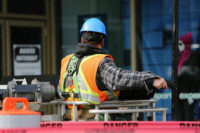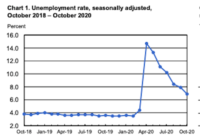Bridge Infrastructure
Study: Small Gain in US Bridge Conditions, But Backlog Still Daunting

Image by ENR Art Dept.
Thanks to the influx of billions of federal dollars from the Infrastructure Investment and Jobs Act, states have made modest progress in reducing their backlog of deficient bridges.
But that backlog remains daunting. There are still 42,391 bridges rated in poor condition and in need of repairs, according to the American Road & Transportation Builders Association's latest annual status report on U.S. bridges.
The report, released on Aug. 16, says that in the past year, the net number of structurally deficient bridges—those rated in poor condition—declined by 560, or 1.3%. If that current rate of improvements continues, it would take 75 years to lift all deficient U.S. bridges out of that category, ARTBA says.
IIJA Funds Are Flowing
Industry officials are hopeful that the IIJA will accelerate that pace. Since the IIJA was signed into law in November 2021, it has provided funds for bridges through several different programs.
The largest is the bridge formula funding program, which so far has distributed $10.6 billion to states for repairs and upgrades.
According to ARTBA, of that $10.6 billion, states have so far committed $3.2 billion, or 30%, to 2,060 specific bridge projects. Eight states had each committed more than two-thirds of their bridge formula funding allocations, led by Idaho and Georgia, with 100% of their allotments committed.
The IIJA will make an additional $15.9 billion available to states over the next three years for the bridge formula program.
The infrastructure law also provides $12.5 billion through its Bridge Investment Program. The U.S. Dept. of Transportation awards those funds via a competition among states. So far, DOT has awarded $2.4 billion in the Bridge Investment Program, and $12.5 billion in succeeding years.
Dave Bauer, ARTBA president and chief executive officer, said in a statement, “The good news is that states are beginning to employ these new resources to address long-overdue bridge needs.”
But Bauer added, “The better news is that more improvements are on the way."
Dr. Alison Premo Black, ARTBA chief economist, said, "Most bridges are inspected every two years, so it takes time for repairs and rehabilitation efforts to show up in the annual federal data."
She added, "What we do know now from other market indicators is that there are more bridge projects in the pipeline."
The deficient bridges are a subset of a larger group of 222,017 bridges that need to be replaced or rehabilitated.
Every year, improvements to some bridges boost them out of poor condition. On the other hand, deterioration to other bridges pushes them into the deficient group. There has been little change in the past year among the states with largest number or percentage of deficient bridges.
West Virginia again has the largest percentage of poor-condition bridges, with 20%. Iowa again has the largest number of deficient bridges, with 4,558.
A bridge is rated poor if one or more of its main components—deck, superstructure, substructure or culverts—is rated poor or worse.
Inspectors rate each component from 0 (failed condition) to 9 (excellent). A 4 rating puts a bridge in the “poor” category.
ARTBA estimates that the cost to make all needed bridge repairs would be more than $319 billion. ARTBA based its report on data from the Federal Highway Administration's National Bridge Inventory.
The report notes that of the 621,510 bridges in the inventory, 275,093, or 44.3%, are rated good; 304,026, or 48.9%, are fair; and 42,391, or 6.8%, are categorized as poor, or structurally deficient.



